Yiran Huang
BrainATCL: Adaptive Temporal Brain Connectivity Learning for Functional Link Prediction and Age Estimation
Aug 09, 2025Abstract:Functional Magnetic Resonance Imaging (fMRI) is an imaging technique widely used to study human brain activity. fMRI signals in areas across the brain transiently synchronise and desynchronise their activity in a highly structured manner, even when an individual is at rest. These functional connectivity dynamics may be related to behaviour and neuropsychiatric disease. To model these dynamics, temporal brain connectivity representations are essential, as they reflect evolving interactions between brain regions and provide insight into transient neural states and network reconfigurations. However, conventional graph neural networks (GNNs) often struggle to capture long-range temporal dependencies in dynamic fMRI data. To address this challenge, we propose BrainATCL, an unsupervised, nonparametric framework for adaptive temporal brain connectivity learning, enabling functional link prediction and age estimation. Our method dynamically adjusts the lookback window for each snapshot based on the rate of newly added edges. Graph sequences are subsequently encoded using a GINE-Mamba2 backbone to learn spatial-temporal representations of dynamic functional connectivity in resting-state fMRI data of 1,000 participants from the Human Connectome Project. To further improve spatial modeling, we incorporate brain structure and function-informed edge attributes, i.e., the left/right hemispheric identity and subnetwork membership of brain regions, enabling the model to capture biologically meaningful topological patterns. We evaluate our BrainATCL on two tasks: functional link prediction and age estimation. The experimental results demonstrate superior performance and strong generalization, including in cross-session prediction scenarios.
Investigating Structural Pruning and Recovery Techniques for Compressing Multimodal Large Language Models: An Empirical Study
Jul 28, 2025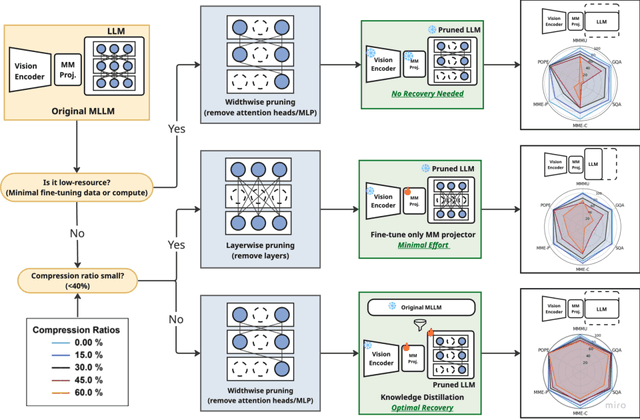
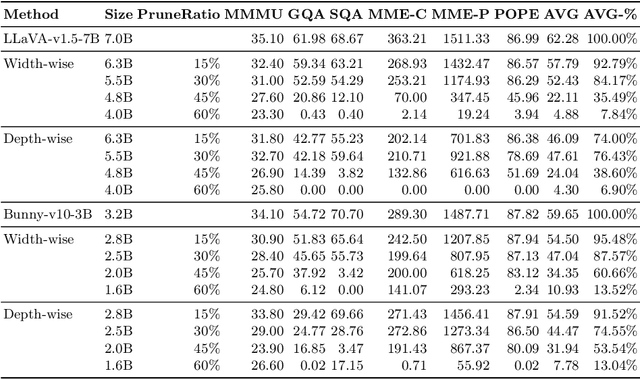
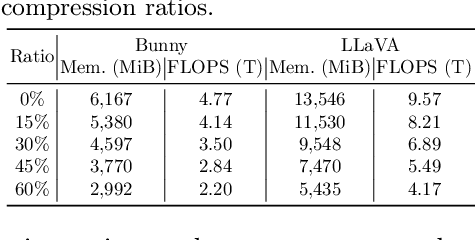

Abstract:While Multimodal Large Language Models (MLLMs) demonstrate impressive capabilities, their substantial computational and memory requirements pose significant barriers to practical deployment. Current parameter reduction techniques primarily involve training MLLMs from Small Language Models (SLMs), but these methods offer limited flexibility and remain computationally intensive. To address this gap, we propose to directly compress existing MLLMs through structural pruning combined with efficient recovery training. Specifically, we investigate two structural pruning paradigms--layerwise and widthwise pruning--applied to the language model backbone of MLLMs, alongside supervised finetuning and knowledge distillation. Additionally, we assess the feasibility of conducting recovery training with only a small fraction of the available data. Our results show that widthwise pruning generally maintains better performance in low-resource scenarios with limited computational resources or insufficient finetuning data. As for the recovery training, finetuning only the multimodal projector is sufficient at small compression levels (< 20%). Furthermore, a combination of supervised finetuning and hidden-state distillation yields optimal recovery across various pruning levels. Notably, effective recovery can be achieved with as little as 5% of the original training data, while retaining over 95% of the original performance. Through empirical study on two representative MLLMs, i.e., LLaVA-v1.5-7B and Bunny-v1.0-3B, this study offers actionable insights for practitioners aiming to compress MLLMs effectively without extensive computation resources or sufficient data.
DD-Ranking: Rethinking the Evaluation of Dataset Distillation
May 19, 2025Abstract:In recent years, dataset distillation has provided a reliable solution for data compression, where models trained on the resulting smaller synthetic datasets achieve performance comparable to those trained on the original datasets. To further improve the performance of synthetic datasets, various training pipelines and optimization objectives have been proposed, greatly advancing the field of dataset distillation. Recent decoupled dataset distillation methods introduce soft labels and stronger data augmentation during the post-evaluation phase and scale dataset distillation up to larger datasets (e.g., ImageNet-1K). However, this raises a question: Is accuracy still a reliable metric to fairly evaluate dataset distillation methods? Our empirical findings suggest that the performance improvements of these methods often stem from additional techniques rather than the inherent quality of the images themselves, with even randomly sampled images achieving superior results. Such misaligned evaluation settings severely hinder the development of DD. Therefore, we propose DD-Ranking, a unified evaluation framework, along with new general evaluation metrics to uncover the true performance improvements achieved by different methods. By refocusing on the actual information enhancement of distilled datasets, DD-Ranking provides a more comprehensive and fair evaluation standard for future research advancements.
Efficient Human-in-the-Loop Active Learning: A Novel Framework for Data Labeling in AI Systems
Dec 31, 2024



Abstract:Modern AI algorithms require labeled data. In real world, majority of data are unlabeled. Labeling the data are costly. this is particularly true for some areas requiring special skills, such as reading radiology images by physicians. To most efficiently use expert's time for the data labeling, one promising approach is human-in-the-loop active learning algorithm. In this work, we propose a novel active learning framework with significant potential for application in modern AI systems. Unlike the traditional active learning methods, which only focus on determining which data point should be labeled, our framework also introduces an innovative perspective on incorporating different query scheme. We propose a model to integrate the information from different types of queries. Based on this model, our active learning frame can automatically determine how the next question is queried. We further developed a data driven exploration and exploitation framework into our active learning method. This method can be embedded in numerous active learning algorithms. Through simulations on five real-world datasets, including a highly complex real image task, our proposed active learning framework exhibits higher accuracy and lower loss compared to other methods.
Revealing and Reducing Gender Biases in Vision and Language Assistants (VLAs)
Oct 25, 2024



Abstract:Pre-trained large language models (LLMs) have been reliably integrated with visual input for multimodal tasks. The widespread adoption of instruction-tuned image-to-text vision-language assistants (VLAs) like LLaVA and InternVL necessitates evaluating gender biases. We study gender bias in 22 popular open-source VLAs with respect to personality traits, skills, and occupations. Our results show that VLAs replicate human biases likely present in the data, such as real-world occupational imbalances. Similarly, they tend to attribute more skills and positive personality traits to women than to men, and we see a consistent tendency to associate negative personality traits with men. To eliminate the gender bias in these models, we find that finetuning-based debiasing methods achieve the best tradeoff between debiasing and retaining performance on downstream tasks. We argue for pre-deploying gender bias assessment in VLAs and motivate further development of debiasing strategies to ensure equitable societal outcomes.
Synthetic Knowledge Ingestion: Towards Knowledge Refinement and Injection for Enhancing Large Language Models
Oct 12, 2024



Abstract:Large language models (LLMs) are proficient in capturing factual knowledge across various domains. However, refining their capabilities on previously seen knowledge or integrating new knowledge from external sources remains a significant challenge. In this work, we propose a novel synthetic knowledge ingestion method called Ski, which leverages fine-grained synthesis, interleaved generation, and assemble augmentation strategies to construct high-quality data representations from raw knowledge sources. We then integrate Ski and its variations with three knowledge injection techniques: Retrieval Augmented Generation (RAG), Supervised Fine-tuning (SFT), and Continual Pre-training (CPT) to inject and refine knowledge in language models. Extensive empirical experiments are conducted on various question-answering tasks spanning finance, biomedicine, and open-generation domains to demonstrate that Ski significantly outperforms baseline methods by facilitating effective knowledge injection. We believe that our work is an important step towards enhancing the factual accuracy of LLM outputs by refining knowledge representation and injection capabilities.
Explainable Deep Learning Framework for Human Activity Recognition
Aug 21, 2024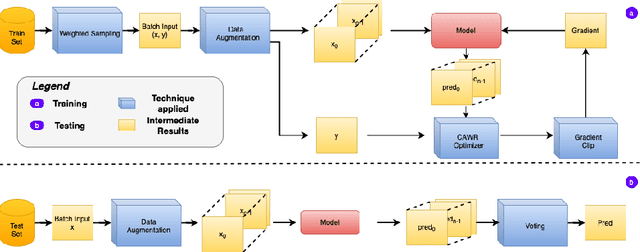
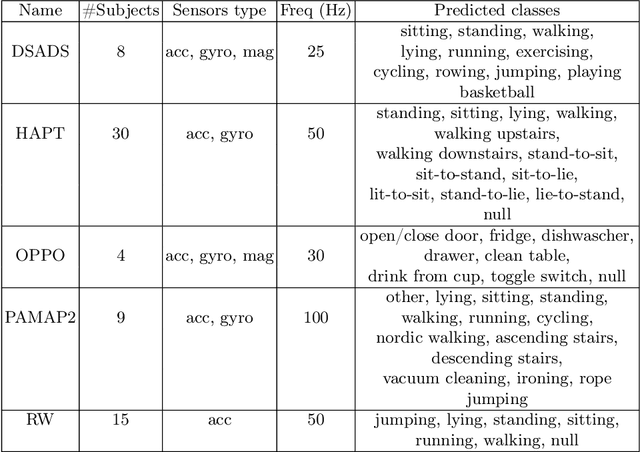
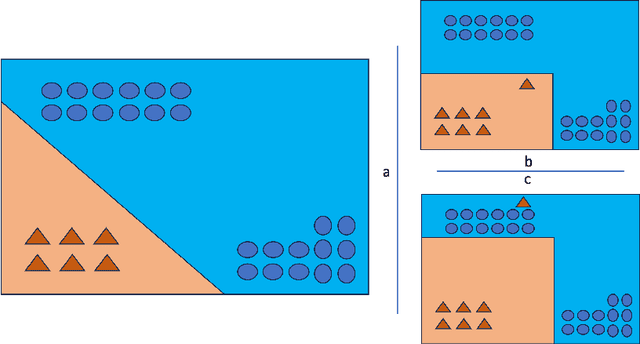
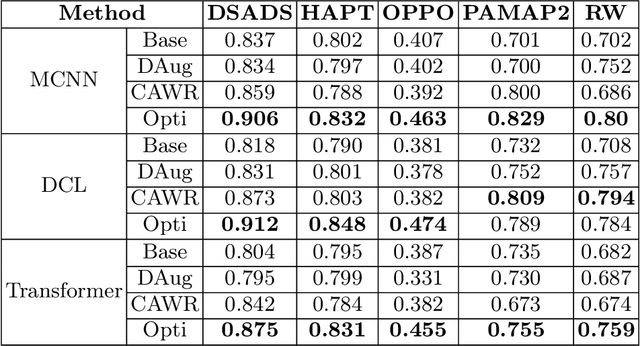
Abstract:In the realm of human activity recognition (HAR), the integration of explainable Artificial Intelligence (XAI) emerges as a critical necessity to elucidate the decision-making processes of complex models, fostering transparency and trust. Traditional explanatory methods like Class Activation Mapping (CAM) and attention mechanisms, although effective in highlighting regions vital for decisions in various contexts, prove inadequate for HAR. This inadequacy stems from the inherently abstract nature of HAR data, rendering these explanations obscure. In contrast, state-of-th-art post-hoc interpretation techniques for time series can explain the model from other perspectives. However, this requires extra effort. It usually takes 10 to 20 seconds to generate an explanation. To overcome these challenges, we proposes a novel, model-agnostic framework that enhances both the interpretability and efficacy of HAR models through the strategic use of competitive data augmentation. This innovative approach does not rely on any particular model architecture, thereby broadening its applicability across various HAR models. By implementing competitive data augmentation, our framework provides intuitive and accessible explanations of model decisions, thereby significantly advancing the interpretability of HAR systems without compromising on performance.
Towards Automatic Evaluation for LLMs' Clinical Capabilities: Metric, Data, and Algorithm
Mar 25, 2024



Abstract:Large language models (LLMs) are gaining increasing interests to improve clinical efficiency for medical diagnosis, owing to their unprecedented performance in modelling natural language. Ensuring the safe and reliable clinical applications, the evaluation of LLMs indeed becomes critical for better mitigating the potential risks, e.g., hallucinations. However, current evaluation methods heavily rely on labor-intensive human participation to achieve human-preferred judgements. To overcome this challenge, we propose an automatic evaluation paradigm tailored to assess the LLMs' capabilities in delivering clinical services, e.g., disease diagnosis and treatment. The evaluation paradigm contains three basic elements: metric, data, and algorithm. Specifically, inspired by professional clinical practice pathways, we formulate a LLM-specific clinical pathway (LCP) to define the clinical capabilities that a doctor agent should possess. Then, Standardized Patients (SPs) from the medical education are introduced as the guideline for collecting medical data for evaluation, which can well ensure the completeness of the evaluation procedure. Leveraging these steps, we develop a multi-agent framework to simulate the interactive environment between SPs and a doctor agent, which is equipped with a Retrieval-Augmented Evaluation (RAE) to determine whether the behaviors of a doctor agent are in accordance with LCP. The above paradigm can be extended to any similar clinical scenarios to automatically evaluate the LLMs' medical capabilities. Applying such paradigm, we construct an evaluation benchmark in the field of urology, including a LCP, a SPs dataset, and an automated RAE. Extensive experiments are conducted to demonstrate the effectiveness of the proposed approach, providing more insights for LLMs' safe and reliable deployments in clinical practice.
RJUA-MedDQA: A Multimodal Benchmark for Medical Document Question Answering and Clinical Reasoning
Feb 19, 2024Abstract:Recent advancements in Large Language Models (LLMs) and Large Multi-modal Models (LMMs) have shown potential in various medical applications, such as Intelligent Medical Diagnosis. Although impressive results have been achieved, we find that existing benchmarks do not reflect the complexity of real medical reports and specialized in-depth reasoning capabilities. In this work, we introduced RJUA-MedDQA, a comprehensive benchmark in the field of medical specialization, which poses several challenges: comprehensively interpreting imgage content across diverse challenging layouts, possessing numerical reasoning ability to identify abnormal indicators and demonstrating clinical reasoning ability to provide statements of disease diagnosis, status and advice based on medical contexts. We carefully design the data generation pipeline and proposed the Efficient Structural Restoration Annotation (ESRA) Method, aimed at restoring textual and tabular content in medical report images. This method substantially enhances annotation efficiency, doubling the productivity of each annotator, and yields a 26.8% improvement in accuracy. We conduct extensive evaluations, including few-shot assessments of 5 LMMs which are capable of solving Chinese medical QA tasks. To further investigate the limitations and potential of current LMMs, we conduct comparative experiments on a set of strong LLMs by using image-text generated by ESRA method. We report the performance of baselines and offer several observations: (1) The overall performance of existing LMMs is still limited; however LMMs more robust to low-quality and diverse-structured images compared to LLMs. (3) Reasoning across context and image content present significant challenges. We hope this benchmark helps the community make progress on these challenging tasks in multi-modal medical document understanding and facilitate its application in healthcare.
Standardizing Your Training Process for Human Activity Recognition Models: A Comprehensive Review in the Tunable Factors
Jan 10, 2024Abstract:In recent years, deep learning has emerged as a potent tool across a multitude of domains, leading to a surge in research pertaining to its application in the wearable human activity recognition (WHAR) domain. Despite the rapid development, concerns have been raised about the lack of standardization and consistency in the procedures used for experimental model training, which may affect the reproducibility and reliability of research results. In this paper, we provide an exhaustive review of contemporary deep learning research in the field of WHAR and collate information pertaining to the training procedure employed in various studies. Our findings suggest that a major trend is the lack of detail provided by model training protocols. Besides, to gain a clearer understanding of the impact of missing descriptions, we utilize a control variables approach to assess the impact of key tunable components (e.g., optimization techniques and early stopping criteria) on the inter-subject generalization capabilities of HAR models. With insights from the analyses, we define a novel integrated training procedure tailored to the WHAR model. Empirical results derived using five well-known \ac{whar} benchmark datasets and three classical HAR model architectures demonstrate the effectiveness of our proposed methodology: in particular, there is a significant improvement in macro F1 leave one subject out cross-validation performance.
 Add to Chrome
Add to Chrome Add to Firefox
Add to Firefox Add to Edge
Add to Edge